June 13, 2019
Basic Tomato Sauce isn’t sexy or exciting.
It’s a foundational ingredient that makes cooking a lot of other dishes much easier than they would otherwise be but, honestly, until a few months ago I never bothered to make it to have on hand.
That was a mistake!
That doesn’t mean that I didn’t have tomato sauces of various types in my freezer. I almost always do but they’re fully prepared special-purpose sauces like my mother’s long-simmered Southern Italian Ragu or my mother-in-law’s Salsa Friulana. If I needed a basic tomato sauce as the starting point for another sauce, I just did it in the moment.
That all changed as part of attending the Master of Italian Cuisine course at the Italian Culinary Institute (ICI). We made a basic tomato sauce (dubbed Simple Tomato Sauce by Chef John) by the gallons…ok, by the liters!
It keeps well. It freezes beautifully. It can be used in its own right as a sauce for pasta or meat or fish. Having it on hand allows you to whip up really tasty pasta sauces much more quickly. Give my recipe for Lupara a look, for example.
Join our mailing list and you’ll never miss a recipe again!
Having foundational ingredients on hand has become more important since I returned from Italy. In an effort to fully integrate what I learned, and to expand my knowledge even further, I’ve been cooking dinner every night that we’re not otherwise engaged.
As an extension, this month we started something new as a way to catalyze learning more about Italian Regional Cuisine. We randomly select a Region of Italy by pulling a slip of paper out of an antique coffee jar. Most of the meals for the month need to be from that Region. This month’s Region is Piemonte. July’s Region is Molise.

I start by researching the foods of the region. Waverley Root’s The Food of Italy is a big help but so are the introductions to many Italian regional cookbooks that I own. Once I have a grasp of the traditional raw ingredients and the classic preparations of the region, I start to curate a list of dishes I want to make. I go through my Italian regional cookbooks as well as Italian-language food websites to find multiple renditions of the dish then decide on how I will make it.
The dishes that I plan to make go on my calendar days in advance and get readjusted based on new ideas or ingredients from the market. Sometimes a dish requires purchasing hard-to-find ingredients, like anchovies cured in salt (of which there is an 800 gram tin sitting in my kitchen right now) or amarena cherries preserved in syrup (1000 gram tin plus a smaller jar from a different company).
The Piemontese have a knack for putting anchovies into almost everything except dessert. And if it doesn’t have anchovies, the dish probably has a bottle of Barolo, like the braised beef that I made a few days ago.
After cooking my way through Molise in July, I’ll be going to Italy for August and September. In August I’ll be learning traditional Tuscan dishes from Great Aunt Fidalma. September will find me be back at ICI for an guided independent study on food preservation. I’ll resume cooking my way through the Regions of Italy in October.
Follow us on your social media platform of choice
Now that I’ve been convinced of the benefit of keeping foundational ingredients on hand, I’m upping my game. In addition to Basic Tomato Sauce I’ve started keeping infused oils. Currently, in squeeze bottles next to my stove, I have garlic oil and rosemary oil. Sometimes I use these to provide a little extra squirt of flavor on a finished dish. Sometimes I use them as I start sautéing ingredients. At this moment, I also have some mint oil on hand that I made to drizzle on a risotto with fresh peas.
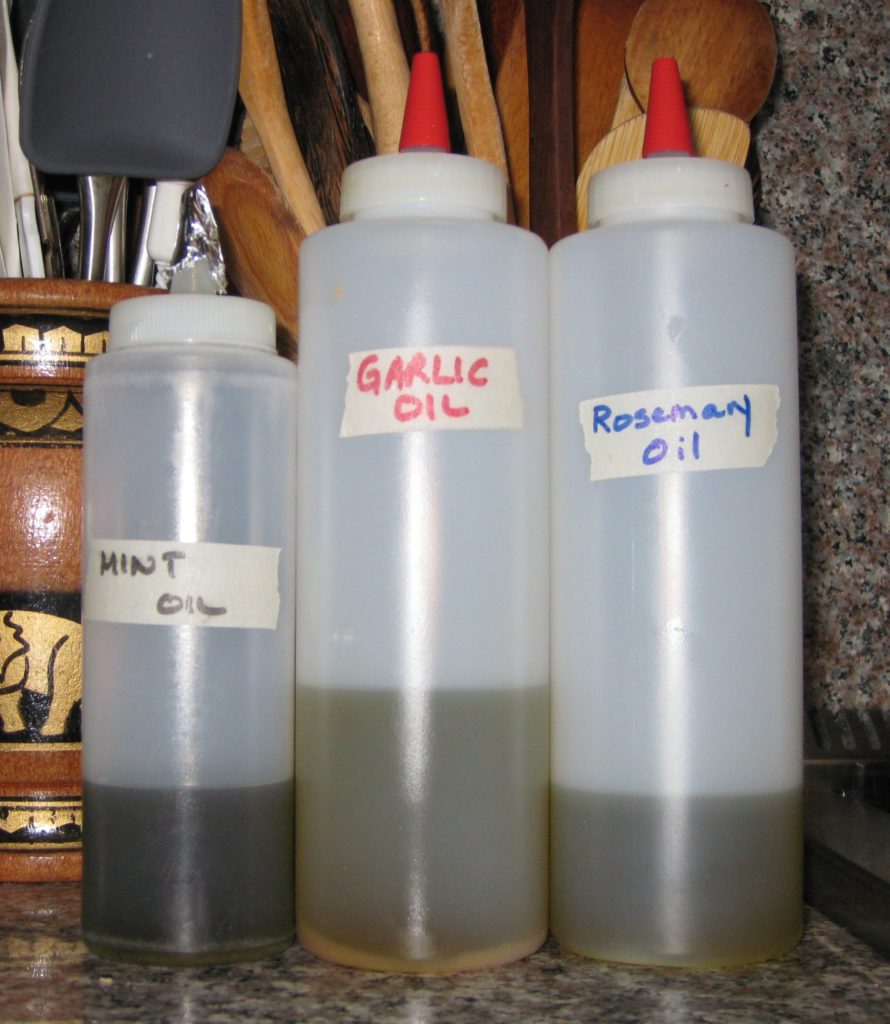
I am eagerly anticipating our fall harvest of hot peppers so that I can make peperoncino oil, which is sometimes called Olio Santo (Holy Oil) in Calabria. Does that give you an inkling of the significance of hot peppers in the cooking of Calabria?
Although Olio Santo can be used within a few days of being made, it is better to let it age for a year. That means I’ll have to make an extra-large batch in the fall so that I have a fully aged stash to hold me until the oil from the 2020 harvest of hot peppers is ready in 2021!
I modified the ICI recipe for Simple Tomato Sauce just a bit to make it my own. I’ve changed the name to Basic Tomato Sauce. That’s the version I’ve posted here.
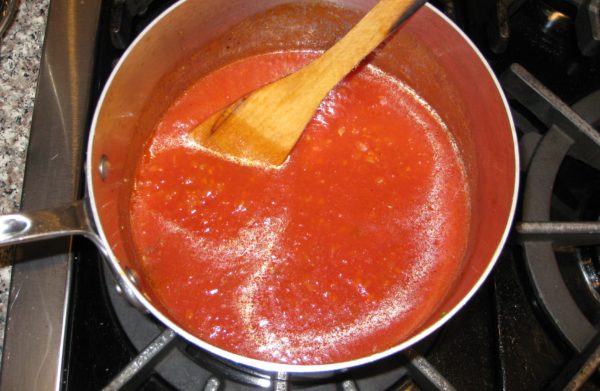
| Prep Time | 15 minutes |
| Cook Time | 30 minutes |
| Passive Time | 15 minutes |
| Servings |
quart (plus a bit more)
|
- 3 1/2 ounces onion finely diced
- 3 1/2 ounces carrot finely diced
- 2 ounces celery finely diced
- 3 tablespoons extra virgin olive oil
- 1 35-ounce can whole peeled tomatoes preferably San Marzano
- salt to taste
- black pepper freshly ground to taste
Ingredients
|

|
- Sweat the onion, carrot and celery, with a large pinch of salt, in the olive oil until soft and the onion is golden, without browning, approximately 15 minutes.
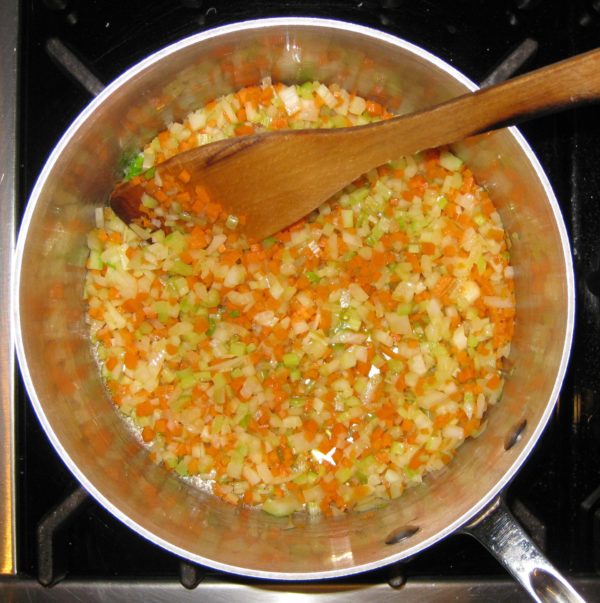
- Meanwhile, pass the tomatoes through a food mill.
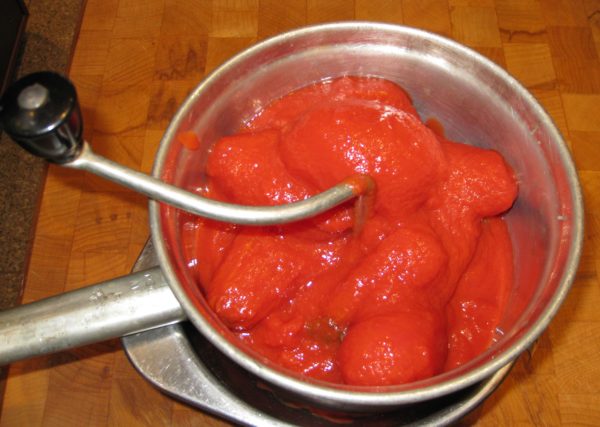
- There should be very little residual in the food mill.
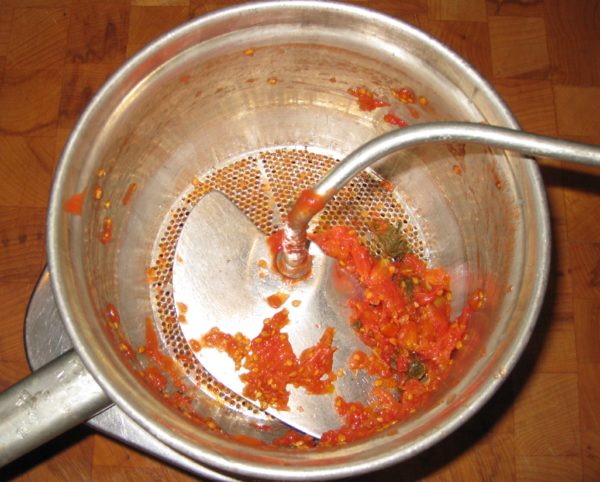
- Add the tomatoes to the vegetables. Season with salt and pepper.
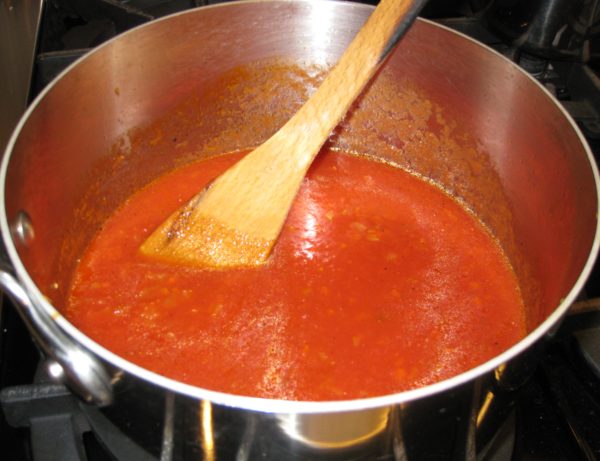
- Simmer, partially covered approximately 15 minutes.
- Cool slightly and blend with an immersion blender or jar blender. Adjust salt and pepper.
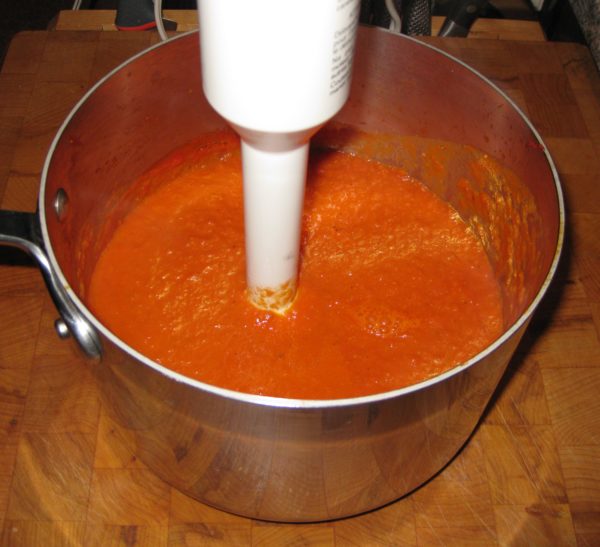
Copyright © 2019 by Villa Sentieri, LLC. All rights reserved.

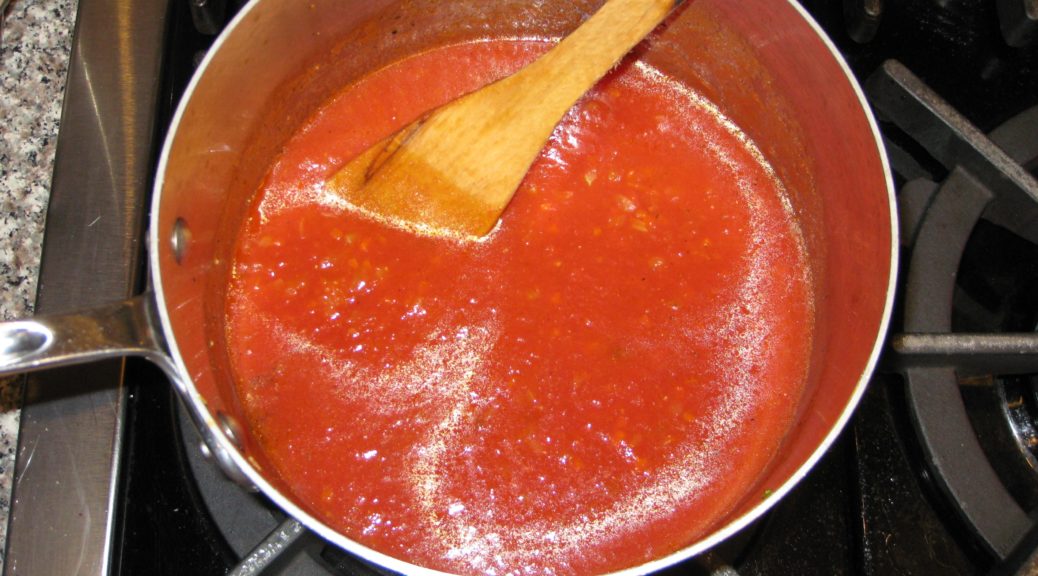
Gary: I agree with your commentary about the
need for basic and traditional tomato sauce,
and your photo of it simmering on the stove
is mouth-watering. BUT you don’t give us the
recipe! Do you mean to?
Thanks!
Hi Jim, The recipe is right above your comment. Enjoy!!
Every year an Italian family near a close friend of ours holds a Tomato Sauce Making Party—outdoors, huge vats, everyone participates, pays an equal share of the veggies, and brings home enough to freeze for the year. Love your writing and ideas, so inspiring!
A Tomato Sauce Making Party sounds like a great idea! Thanks for the compliment. I’ve been pondering turning the Calabria Dispatches into a book with recipes. The positive feedback about my writing is inspiring.
Hi Gary,
Yes, I agree, having a batch of “Basic Tomato Sauce” on hand is very useful. Thanks for sharing!
zia Ida
P.S. I’m entering our new email address below hoping this is all I have to do to receive your blog at the new address.
Your email address is updated!
I’ve been making a sauce very similar to this with the following differences: I use fresh Roma tomatoes that I boil, peel, clean in the mill and add to a mix of onions and carrots (no celery) and continue just as you have in this recipe. I try to keep extra frozen for a quick addition to meals. Sometimes just adding parmesan Reggiano, fresh basil, and a little butter. I will give yours a try. Thanks for the new ideas to add to my cooking!!
The Italian Culinary Institute does not put celery in their version of this sauce as the celery in that part of Italy has a particularly strong flavor. Since celery is not as strong here, and since it often appears in similar sauce recipes, I added it to my rendition. Since good Roma tomatoes are only available for a short period of time, canned tomatoes provide a year-round alternative of very good quality.
What a difference and a great addition to my larder! No tinny or sweet nuance. Very fresh and light even after a week in the freezer.
I’m glad you like it. It’s a great base for lots of other sauces, too.